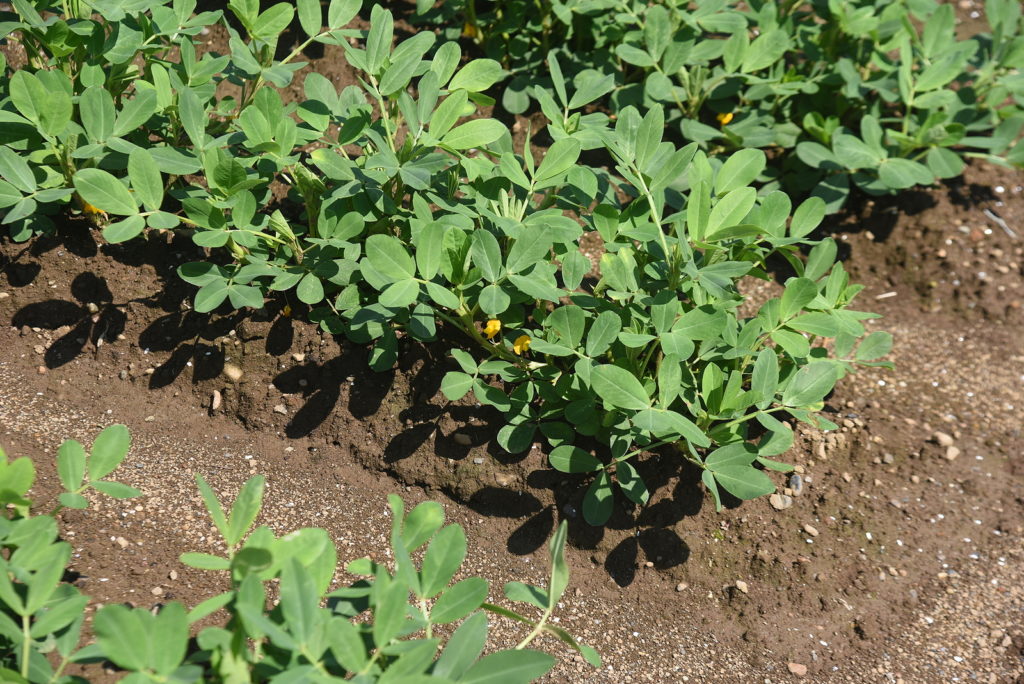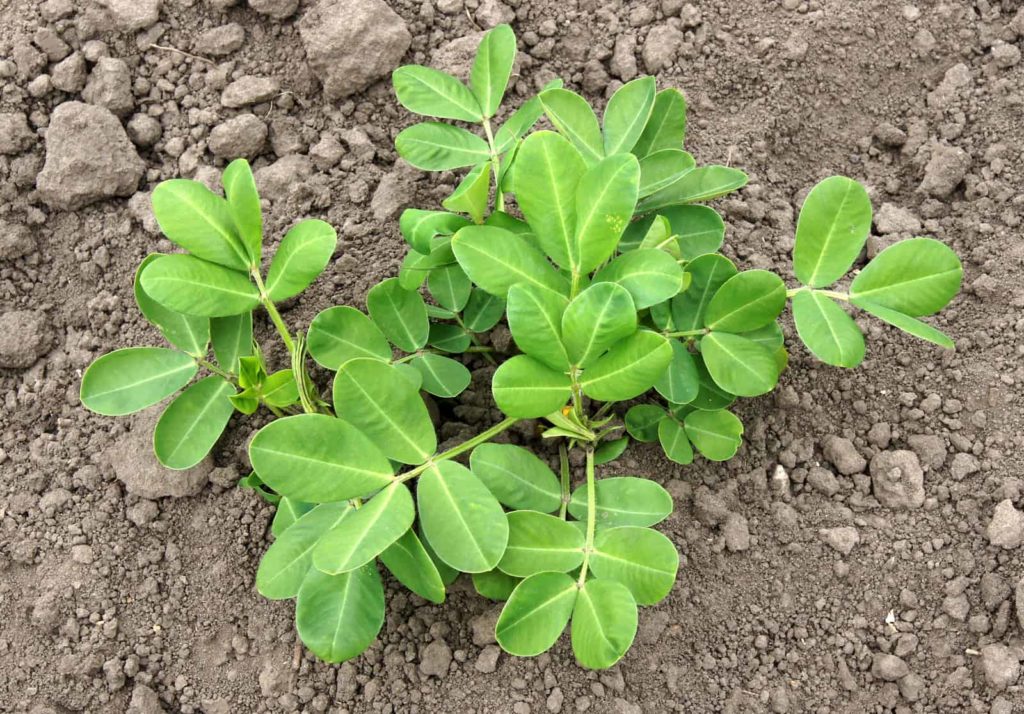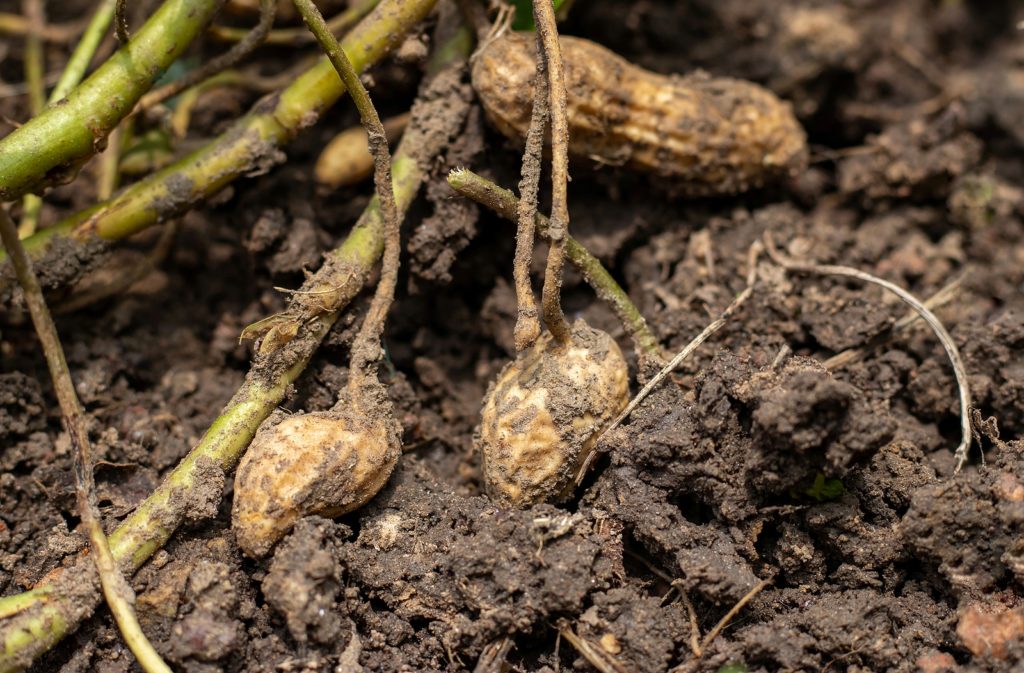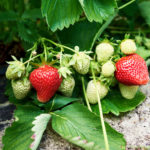Peanuts are a warm-weather crop. They require a long frost-free growing season to mature. If you can grow melons in your garden, you can likely grow peanuts.
Start peanuts in the garden after all danger of frost has passed and the soil has warmed to 70°F (21°C) or greater. Peanuts can be started indoors but they generally do not like to be transplanted.
Start peanut plants from nuts that have been shelled or from those still encased in the shell. Leave the skin of shelled nuts intact.
Peanuts mature in 110 to 120 days after starting sowing.
Good Products for Growing Peanuts at Amazon:

When to plant peanuts
Plant peanuts in the garden 1 to 2 weeks after the last frost when the soil has warmed. Peanuts are a very tender, long-season crop. They grow best in regions where there are at least 120 frost-free days. The soil temperature should be at least 60°F (16°C) before planting peanuts.
Peanut seeds are usually sown directly in the garden after the last frost-free date. In short-season regions, planting in the garden earlier can be risky, and starting seeds indoors may be a better option. Indoors, sow seeds in individual containers so that seedlings can be transplanted without disturbing the roots. Start seed indoors 4 to 6 weeks before the last frost.
Peanut seeds can be planted either in or out of the pod. If the pod is thin, it is best not to shell the peanut. When removing shells be careful not to tear the red skin; if the skin surrounding the seed is torn germination will likely not occur.
Peanut planting details
- Sowing depth: 1.5 inches
- Space between plants: 12-18 inches
- Days to harvest: 110-120
- Suggested varieties: Warm regions: Virginia Bunch, Mammoth Virginia, Jumbo Runner; Cool regions: Red Tennessee, Early Spanish
Planting peanuts in the garden
Peanuts require full sun. Grow peanuts in loose, well-drained soil, a sandy loam is ideal. Loosen the soil to 18 inches (45cm) or deeper. If the soil is heavy, cool, or damp, seeds can rot.
Peanuts can grow in poor soil, but the yield will be improved by adding aged compost rich in phosphorus and potassium (add bone meal to the soil). Peanuts are legumes that build the soil; they need no nitrogen.
Keep the soil surface loose which allows runners to implant. You can mulch to cover the runners.

Peanut sowing and planting tips
- Grow peanuts from shelled whole nuts with the papery skin still intact or from peanuts still encased in the shell. Shelled peanuts germinate more readily than those still encased in the shell. Split or half nuts will not sprout.
- Peanuts do not transplant well so it’s best to start them in the garden after the soil temperature is 70°F (21°C) or greater, about 2 to 3 weeks or later after the last frost in spring.
- Time the sowing of peanuts started indoors so that seedlings go into the garden 2 to 3 weeks after the last frost in spring; that means sowing seeds indoors 6 to 4 weeks before the last frost in spring.
- Sow each peanut 1 to 1½ inches deep (2.5-3 cm) deep; space seeds 3 inches (7 cm) apart.
- Alternatively, sow seeds 2 inches (10 cm) in a furrow about 2 inches (5 cm) deep.
- After seedlings emerge and begin to grow, draw loose soil up around the base of the plants.
- Thin seedlings to 12 inches (30 cm) apart.
- Grow peanuts in loose, sandy loams with plenty of aged compost added in advance of planting.
- You can pre-warm the garden planting bed with a mulch of black plastic—but remove the plastic when plants start to flower.
- Peanuts grow best where the soil temperature is between 70° and 85°F (21-19°C).
- Peanuts prefer a soil pH range of 6.0 to 7.0.
- Grow peanuts in full sun.
- Keep the soil moist until “pegs” enter the soil; a peanut peg is the flower stem and peanut embryo. About a month after seedlings emerge from the soil, flowers will develop near the bottom of the plant; when the flower petals fall off, the stem and the seed left behind by the flower (a peanut embryo) will bend downward and grow into loose soil—these “pegs” become peanuts.
- Once pegs have entered the soil, mulch around plants with a layer of straw.
- To help pegs enter the soil you can mound up loose soil on either side of rows, as you would “hill” potatoes. In a sense, by mounding you are helping the pegs and soil to meet halfway.
More tips at How to Grow Peanuts.
Crop rotation: Grow peanuts where root crops such as carrots or turnips have recently grown; do not plant where peas have recently grown.
Container growing: Use a container 30 inches (76 cm) deep and 20 inches (51 cm) across.

Peanut planting calendar
- 4-6 weeks before the last frost in spring: sow seed indoors.
- 2-3 weeks after the last frost in spring: sow seed directly in the garden or transplant out seedlings started indoors; peanuts can be difficult to transplant.
Peanut planting dates
(These dates are for the Northern Hemisphere)
| Average date of the last frost | Planting dates |
| Jan. 30 | Feb. 15-May 15 |
| Feb. 8 | Mar. 1-May 15 |
| Feb. 18 | Mar. 20-June 1 |
| Feb. 28 | Apr. 1-June 1 |
| Mar. 10 | Apr. 10-June 1 |
| Mar. 20 | Apr. 20-June 1 |
| Mar. 30 | May 1-June 1 |
| Apr. 10 | May 10-June 10 |
| Apr. 20 | May 20-June 10 |
| Apr. 30 | Season may be too short |
| May 10 | Season may be too short |
| May 20 | Season may be too short |
| May 30 | Season may be too short |
| June 10 | Season may be too short |

Peanut harvest
Peanuts mature in 110 to 120 days. Harvest can begin once the foliage has yellowed and seeds fill the pods. Even after top growth yellows or had been killed by frost, nuts will continue to mature. Dig or pull the plant using a spade or garden fork to unearth all of the peanuts in the soil. Cure peanuts for about 1 month in a warm, dry place.
Botanical Name: Arachis hypogaea
Peanuts are a member of the Leguminosae or pea family.
Related peanut articles:
Garden Planning Books at Amazon:
- Vegetable Garden Almanac & Planner
- Kitchen Garden Grower’s Guide Vegetable Encyclopedia
- Vegetable Garden Grower’s Guide
- Tomato Grower’s Answer Book



